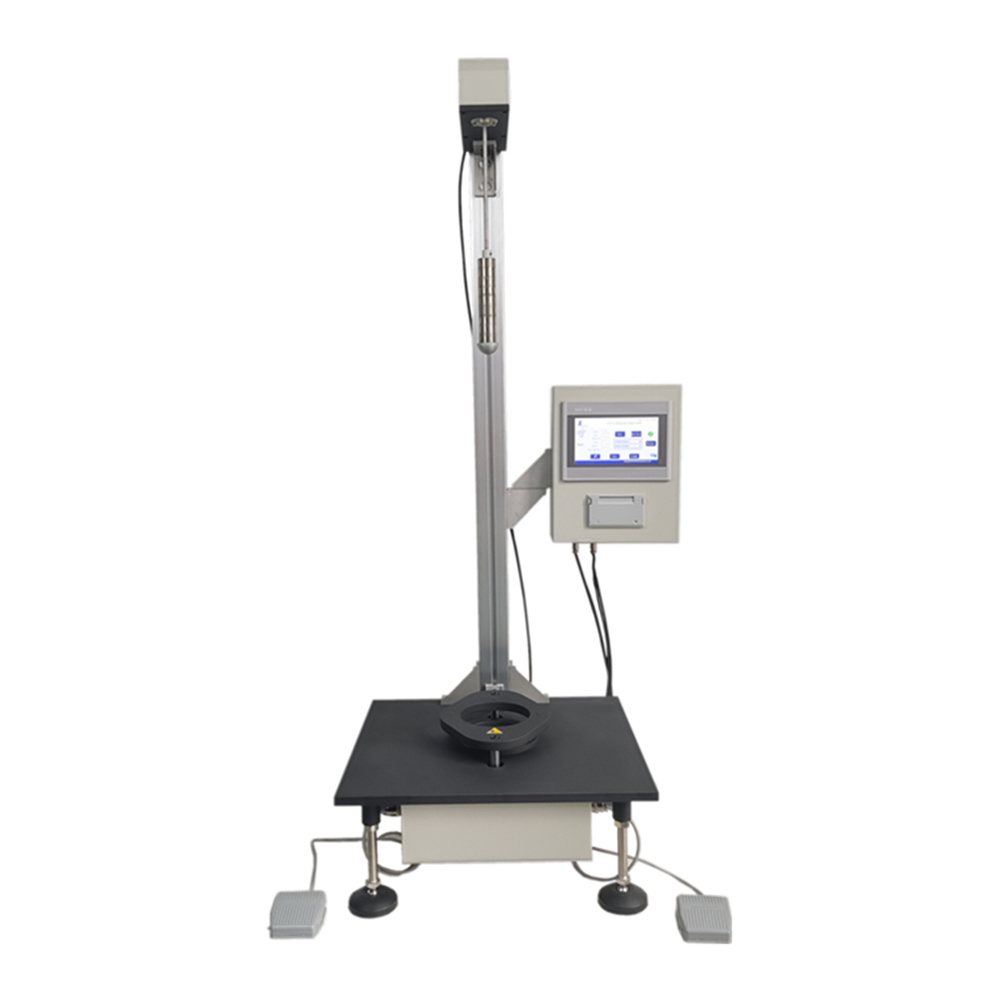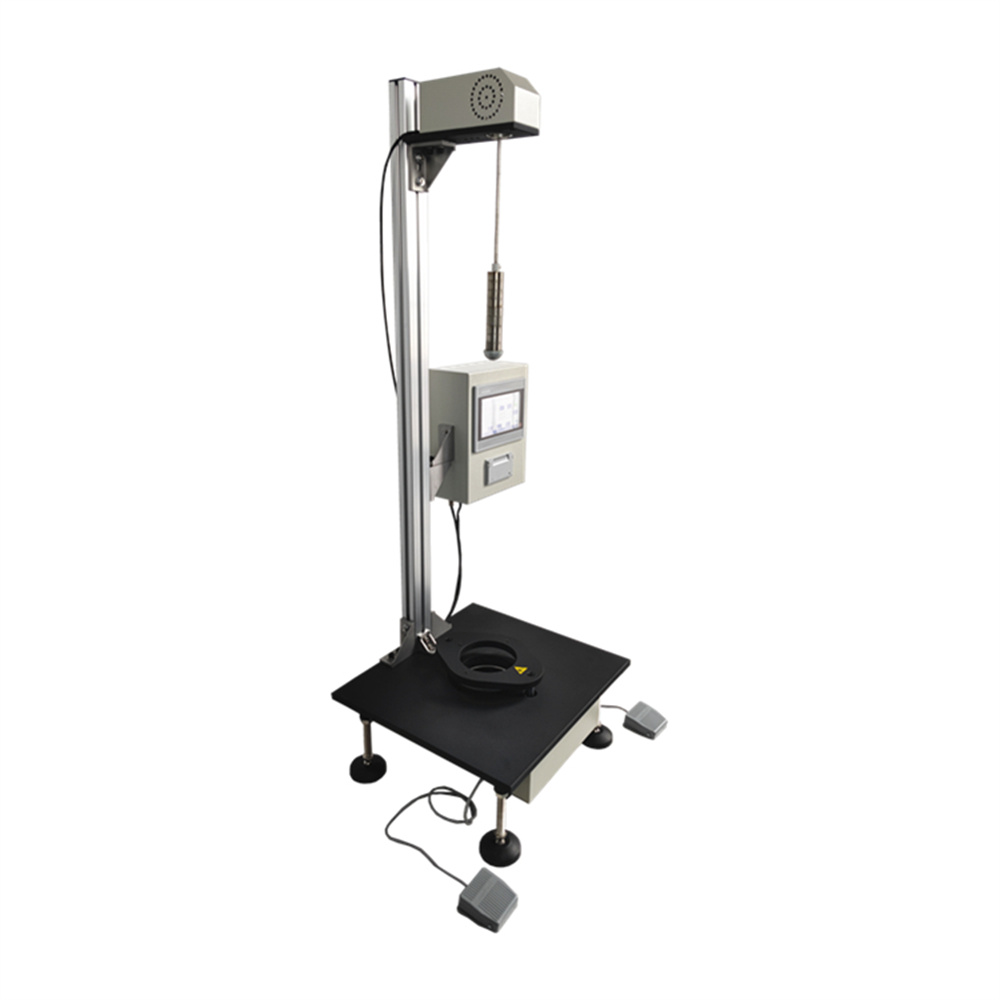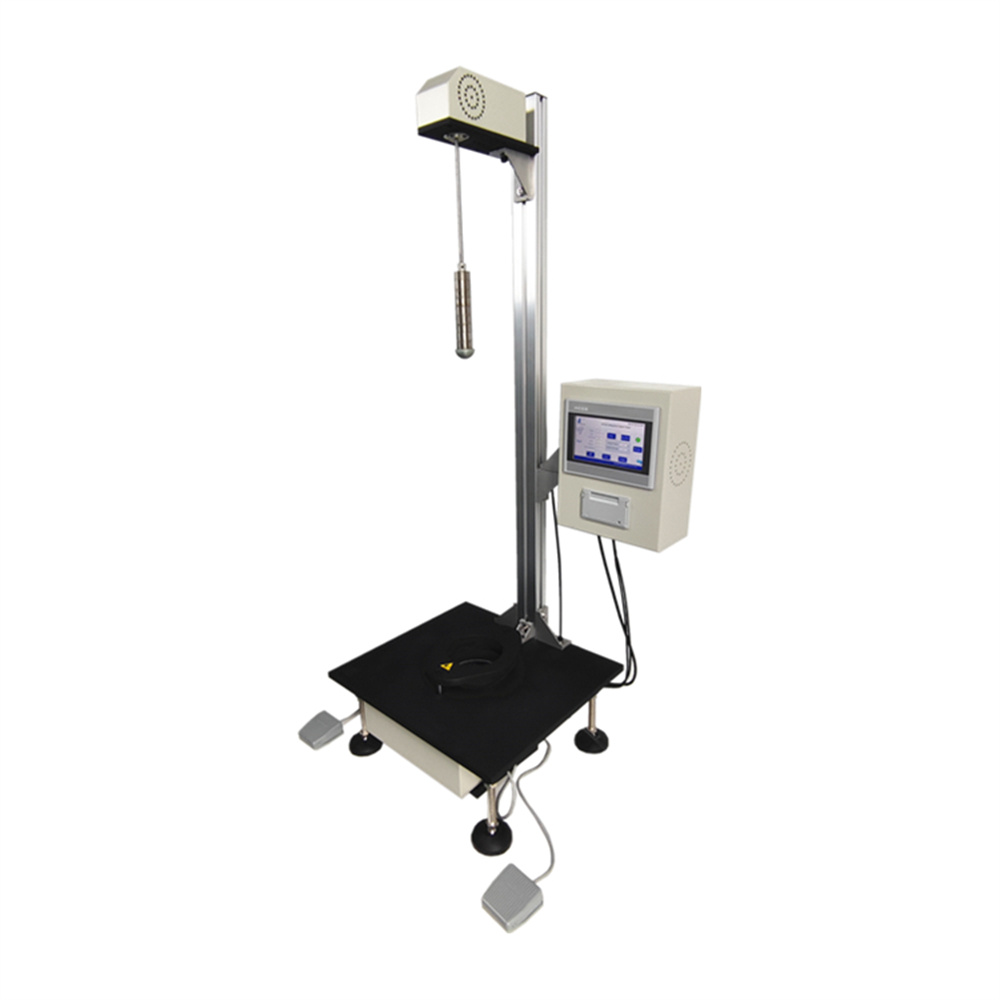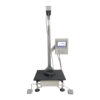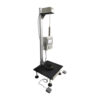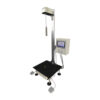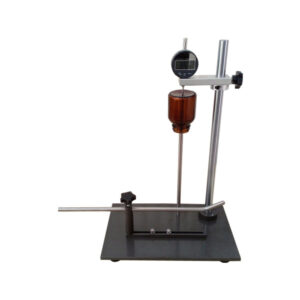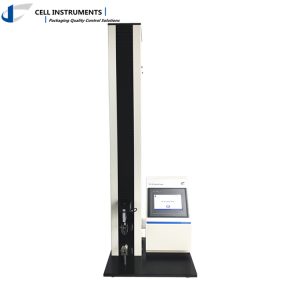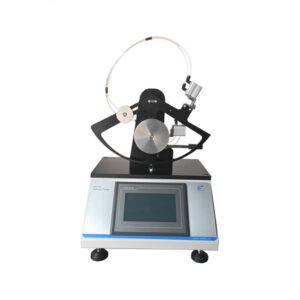FDT-01 Falling Dart Impact Tester
The Free Falling Dart Impact Tester is used to measure the impact resistance of plastic films, packaging materials, and other thin materials. The test determines the energy required to cause failure by dropping a weighted dart from a specified height onto the material. It follows standards such as ASTM D1709 and ISO 7765-1.
The Falling Dart Impact Testing Machine is a critical instrument designed to evaluate the impact strength of plastic films, sheets, composite films, foils, and paper with a thickness of less than 1mm. This test is essential for assessing a material’s ability to withstand external forces, directly influencing product performance and durability during handling, transportation, and storage. By simulating real-world conditions, the tester provides valuable data that aids in material selection, product design, and quality control.
What is the Drop Dart Impact Test?
Falling dart impact testing is a widely recognized method for determining the impact resistance of materials. It involves dropping a weighted dart from a specified height onto the test material to measure the energy required to cause failure. The results help manufacturers evaluate material toughness, ensuring products can endure handling stresses and maintain integrity in their applications.
Compliance with Standards
The Drop Dart Impact Tester conforms to several international standards, ensuring reliable and accurate results:
- ASTM D1709: This standard outlines the procedure for determining the impact resistance of plastic films using a free-falling dart.
- ISO 7765-1: International standard for impact testing of plastic films.
- JIS K7124-1: Japanese industrial standard for evaluating the impact performance of films.
- GB/T 9639.1: Chinese national standard aligning with global practices for material impact resistance.
Key Features of the Drop Dart Impact Tester
- PLC Control & Touch Screen Operation
- Dual Test Methods
- Method A: Suitable for a dart diameter of 38 ± 1 mm and a drop height of 660 mm.
- Method B (optional): Designed for a dart diameter of 50 ± 1 mm and a drop height of 1500 mm.
- Safe and Convenient Operation: Equipped with both a test button and a foot switch.
- Automated Calculations: The embedded program automatically calculates results in grams and joules.
- Observation Light & Pneumatic Clamping: The observation light assists in sample monitoring during tests, while the pneumatic clamp ensures secure sample holding.
- Data Output: The tester includes a dot matrix micro-printer for direct data output.
- Software Integration: Optional professional software enhances data management and reporting capabilities.
Technical Specifications
|
Test Method Method |
A or Method B (optional) |
|
Test Range |
Method A: 50~2000g/ Method B: 300~2000g |
|
Dart Diameter |
Method A: 38±1mm Method B: 50±1mm |
| Impact Height |
660mm/1500mm |
|
Accuracy |
0.1g (0.1J) |
| Clamp |
Pneumatic Clamp |
|
Gas Supply |
0.6 MPa Φ8 mm PU Tubing |
| Specimen Size |
> 150 mm x 150 mm |
|
Power Supply |
AC 110~220V 50Hz |
| Dimension |
Method A: 500*450*1200 mm (LWH) |
Falling Dart Impact Testing Machine Applications
The Drop Dart Impact Tester is ideal for:
- Plastic films and sheets used in packaging and product protection.
- Composite films and foils requiring impact resistance evaluation.
- Paper materials subjected to handling stresses.
Benefits of Dart Drop Impact Tester
- Improved Quality Control: Ensures materials meet durability standards before use.
- Enhanced Product Design: Provides insights into material performance, aiding in optimal design.
- Cost Efficiency: Reduces material waste by identifying weak points early.
FAQs About Drop Dart Impact Tester
- Why is the drop dart impact test important?
It determines the toughness of materials by simulating real-world impact conditions, helping ensure product reliability. - What industries benefit from using this tester?
Industries such as packaging, food, medical, and pharmaceuticals benefit from evaluating the impact strength of materials. - What is the significance of ASTM D1709?
ASTM D1709 provides standardized procedures for conducting drop dart impact tests, ensuring consistency and reliability of results. - How does the pneumatic clamping system work?
The pneumatic system securely holds the sample in place, preventing movement during testing and ensuring accurate results. - Can results be exported for further analysis?
Yes, the tester includes a built-in printer for immediate results and optional software for detailed data management.

